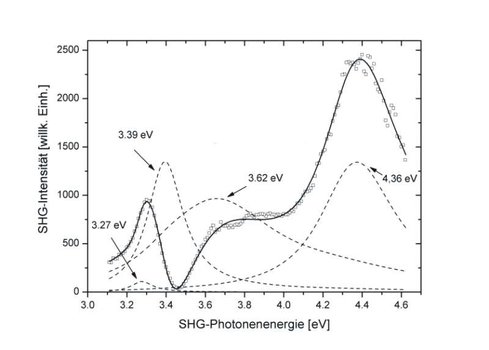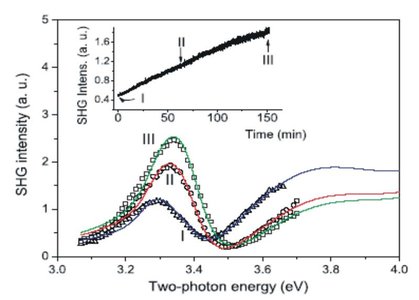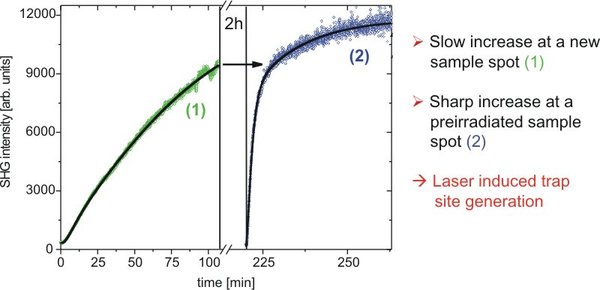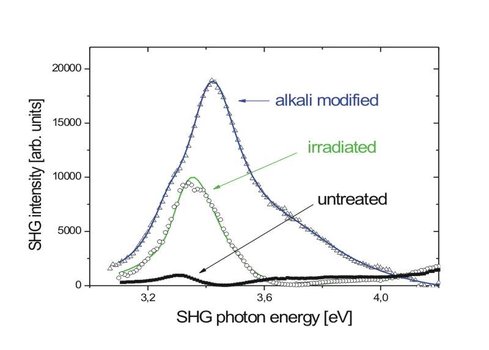
Si/SiO2is by far the most important system in the production of MOS (metal-oxide-semiconductor) structures, which form the basis of computer technology. For this reason, Si/SiO2 interfaces have been the subject of intensive research for over 30 years. In the course of the miniaturization of electronic components, interfaces are becoming increasingly important. Charges that are trapped in defects at the interface or in the SiO2 volume change the dielectric properties of the oxide, so that the functionality and service life of the electronic component is negatively affected. In fact, the construction of the first MOS-like transistor failed in 1935 due to this problem. Despite intensive research, however, it has still not been possible to gain a detailed understanding of the microscopic processes responsible for trapping the charges.
The purely optical method of second harmonic generation (SHG), has proven to be a valuable method for studying interfaces and surfaces over the last decade, not least due to advances in femtosecond laser technology. SHG is particularly suitable for investigating the interface properties of inversion-symmetric materials (such as silicon). In the volume of such materials, the generation of the second harmonic is dipole-prohibited, so that the SHG signal is mainly generated at the interfaces where the inversion symmetry is necessarily broken. SiO2 is transparent in the relevant wavelength range, so that the electronic properties of the buried Si/SiO2 interface can be investigated non-destructively with SHG. For this purpose, our working group has a tunablefemtosecond laser systemwhich can be used to record SHG spectra in the range from 3.0 eV to 4.6 eV two-photon energy (Fig. 1, a detailed explanation of the spectrum can be found here can be found here).

Influence of electric fields
Another property of SHG spectroscopy is its sensitivity to internal electric fields. These cancel out the inversion symmetry, so that an additional contribution to the SHG signal from the volume occurs. Charge shifts between Si and SiO2under the influence of laser radiation, caused for example by the charging and discharging of defects in the silicon oxide, can thus be investigated. Fig. 2 shows an example of the changes in the SHG spectrum of a Si/SiO2 sample with a 10 nm thick thermal oxide under continuous laser irradiation.

Laser-induced defect generation
The dependence of the SHG signal on the electric field at the interface is used in time-dependent SHG spectroscopy to investigate the dynamics of charge carrier displacements. This provides information about any existing defects in which electrons can be trapped.
From the faster increase of the SHG signal at a pre-irradiated sample site, it can be concluded that new defects are created under the influence of the laser radiation (Fig. 3).

Detection of alkali contamination
A major problem in the production of transistors is contamination, which can enter the component during the manufacturing process and have a negative impact on its functionality and service life. Contamination by sodium ions , which arevery mobile in SiO2, is particularly relevant. As the ions influence the electric field at the Si/SiO2 interface, the effects of alkali impurities at the Si/SiO2 interface on the SHG spectrum are dramatic (Fig. 4), so that they can be detected using SHG spectroscopy.